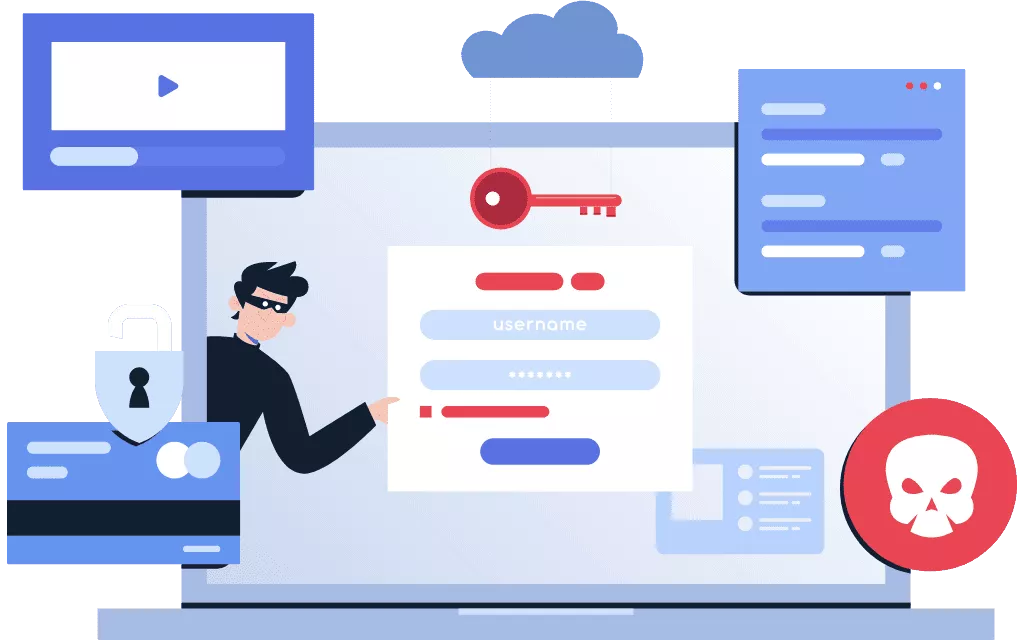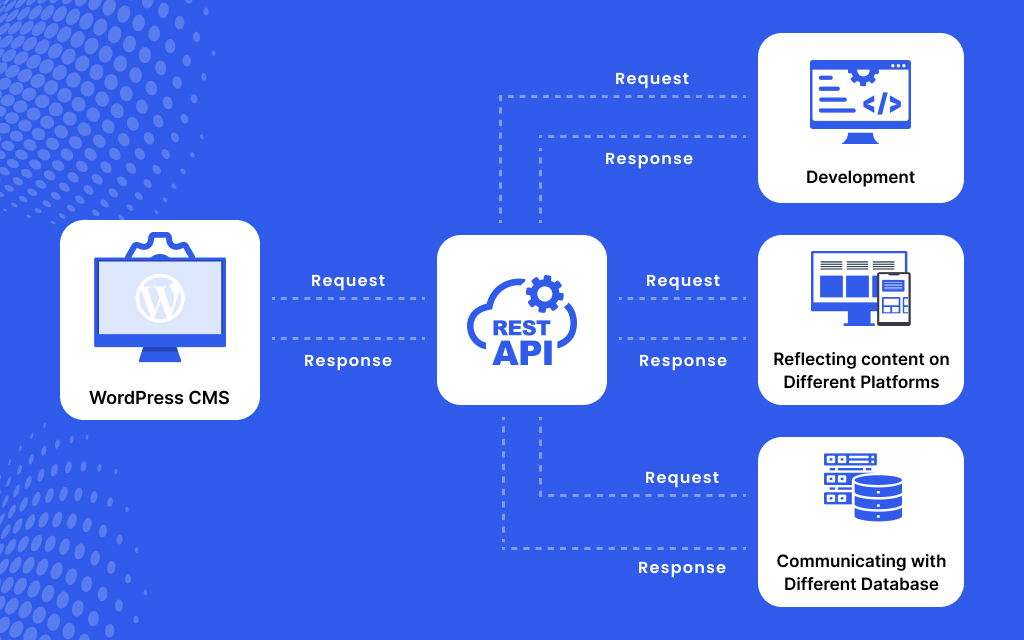In the current day, technology influences everything we do every day, and it has taken on a prominent role in modern societal progress. The current situation has compelled companies to reconsider their infrastructure and operational strategy in light of a digital approach. Companies have seen exponential growth in cyber threats and breaches as the digitalization environment has evolved. As a result, businesses are creating new testing techniques to discover vulnerabilities early in the development process and proactively avoid any possible assaults.
Cybersecurity testing is an important part of the risk assessment method. It assists companies in understanding, controlling, and mitigating any cyber risk while also providing comprehensive data protection. With the emergence of new scenarios of changing regulation and regulatory requirements, cybersecurity testing has emerged as a guiding force for organizational growth.
On the other hand, compliance testing is performed to ensure that the organization’s specified requirements are met. Compliance testing is done to avoid any compliance risk that might expose the business to legal fines, financial loss, or material damage. Let’s talk about the effect of cyber and compliance risk and how to deal with it using appropriate software testing.

Cybersecurity: When it comes to assessments and testing, what’s crucial?
Cybersecurity is required in companies to protect data, increase user privacy, and avoid any security incident. Companies are implementing a variety of testing techniques to analyze and prevent possible assaults properly. By addressing possible vulnerabilities, businesses may avoid situations that could lead to a security breach.
The following are the two main security testing criteria:
- Vulnerability assessment
- Penetration testing
Vulnerability assessment
A vulnerability assessment is carried out to determine the system’s susceptibility. It is a network infrastructure automated scan technique that identifies security flaws. These automated scans include a series of tests on each application to understand the setup to discover any errors, flaws, or inconsistencies.
The following procedures are taken to assess vulnerability:
- Classifying a system’s assets and capabilities
- Identifying possible risks to each resource
- Assigning significance to those resources
- Eliminating vulnerabilities for the most important resources
Penetration Testing
A penetration test, often known as a pen test, is an attempt to evaluate the security of an IT infrastructure by safely exploiting vulnerabilities. These flaws may be discovered in operating systems, software, apps, improper settings, and risky end-user behavior. These tests may also be used to validate the efficacy of defensive mechanisms and end-user adherence to security rules.
Penetration testing cybersecurity is often used to manually or automatically evaluate websites, endpoints, web interfaces, broadband networks, network PCs, portable devices, and other potential sources of vulnerability. Testers attack a vulnerability in one device and move on to other resources in the organization, mainly privilege escalation, to exploit other vulnerabilities to increase their security clearance and access to electronic assets and information.
Penetration testing offers many advantages in the realm of cybersecurity.
In an ideal world, we would build apps and infrastructure with security vulnerabilities taken into consideration from the outset. A pen test will inform you how far you’ve progressed toward your objective. Pen testing aids in the following security actions, among others:
- Identifying weaknesses in processes; determining the strength of controls
- assisting in the compliance with data protection
- security regulations (e.g., PCI DSS, HIPAA, GDPR)
- Providing qualitative and quantitative descriptions of the existing security posture and budget targets to management
To best prepare for a cybersecurity testing, look for these specific areas
Determining the kind of cybersecurity testing: The first stage in addressing vulnerabilities determines if the threat is a basic vulnerability or an advanced persistent threat. Once the threat has been identified, the tester will describe the type of security testing utilized; penetration testing will be employed to discover the underlying problems in most situations.
Identifying the effect of the system’s danger is critical to identify and describe a possible threat to fix the difficulties. It is determined by whether the danger is an internal or external vulnerability. External vulnerabilities are more dangerous than internal vulnerabilities because they might provide a backdoor for hackers or other unauthorized persons.
Finding a risk-mitigation method: Risk mitigation is necessary to eliminate any vulnerability in the system and ensure total security. The risk-mitigation method also includes analysis to select the best resource. The risk mitigation procedure is often carried either by a third party or an internal team.
Defining a solution: Most organizations prefer third-party security testing, which identifies vulnerabilities and provides useful recommendations on which security solutions and technologies to purchase. Companies frequently perform due diligence and expect a third party to undertake independent security analysis to assure total safety.
Risk management process
Begin by developing a cybersecurity framework from each area of the company to establish the desired risk posture of the business.
Guidance Software suggests implementing new technologies that can locate and map data across the organization. Once data is mapped, companies can make better decisions about controlling that data and decreasing their risk footprint.
After determining the intended risk posture, assess the business technology infrastructure to establish a baseline for the current risk posture and what the enterprise needs to do to transition from the current state to the desired level of risk exposure.
As long as proactive efforts are made to recognize possible dangers, the chance of risk exposure and being a victim of a cybersecurity event is reduced.
However, even minor security flaws can result in significant losses if network systems are linked. An incursion into an insignificant region allows unauthorized access to more critical systems and sensitive data.
The only way to make a system completely safe is to ensure that no one can access it, which is unrealistic at best. Secure systems may discourage approved customers from doing transactions. If authorized users cannot access the systems or data they require to do their tasks; they may seek workarounds that may jeopardize systems.
Risk mitigation
Among the cybersecurity precautions to consider:
- Limiting the number of devices with Internet access
- Implementing network access controls
- Limiting the number of individuals with administrator credentials and the management privileges granted to each administrator
- Automating operating system patches
- Restrictions for earlier operating systems (i.e., devices running Windows XL or older OS no longer supported)
- Firewalls
- Anti-virus software and endpoint protection
- Enforcing two-factor authentication for access to certain files and systems:
- Evaluating the present governance structure to verify that there are checks and balances throughout the system
We offer the following recommendations for enhancing risk management:
Advanced encryption: Although encryption is not a new feature in databases, we must now apply it in a more planned and systematic manner to safeguard data from cyber thieves and insider threats. Granular role-based access, standards-based cryptography, sophisticated key management, granular division of responsibilities, and cutting-edge algorithms that significantly reduce vulnerability are all part of this.
While data encryption helps defend against external breaches, it offers nothing to guard against internal data theft. Insiders who have access to sensitive data must have the credentials to decrypt it. As a result, businesses must also guard against data theft from corporate systems via portable media such as thumb drives and other ways.
Redaction: Companies must strike a balance between data security and data sharing. Redaction provides companies with a way to convey sensitive information with minimal effort. For example, concealing personal names and social security numbers reduces the amount of work required to respond to queries and updates.
Element-level security: While redaction is crucial, businesses must perform it at the element, or property, the level depending on an employee’s duties. Companies must also be able to apply both bespoke and out-of-the-box regulations.
The human element
Aside from technological safeguards, continual training and education about security dangers are critical. Many hackers have moved on from Trojans, viruses, and other malware to phishing and spear phishing, attempting to access executable files containing malware or offering passwords or sensitive personal or business data.
We propose integrating cybersecurity information in company rules for employees and business partners to understand what is and isn’t appropriate.
Incident response
An enterprise’s very presence on the Internet exposes it to cybersecurity risk. Attempts will be made both outsides and internally to compromise an organization’s data. As a result, incident response plans should be in place to decide what measures should be taken if specific occurrences occur. An increase in hacking attempts at the firm or in the company’s industry may need increased safeguards.
If a breach happens, the organization should have clear procedures in place for who to tell within and outside the company, contact information for law enforcement, business suppliers, and customers, an action item checklist, public relations reaction, and so on.
What is Compliance Testing?
Compliance is defined as following laws and meeting requirements in general. Any divergence from the law might expose the firm to legal difficulties, commonly referred to as compliance risk. Organizations often conduct compliance testing to prevent any compliance risk or mitigate the current risks connected with a compliance policy.
Cybersecurity and compliance testing refer to developing a program that offers risk-based controls to ensure the integrity, confidentiality, and usefulness of data gathered, communicated, or transferred. Compliance with cybersecurity standards is not based on a single norm or regulation. Different criteria might fluctuate depending on the market, generating uncertainty and extra effort for businesses that utilize a checklist-based technique.
Information Subjected to Cybersecurity Compliance Testing
Individually identifiable data: Any information that may be used to identify a person is included individually.
Health information: This includes data from a person’s records or prescriptions and specifics that we may use to identify them.
Financial information: includes payment systems, credit card numbers, and other data that we might use to steal a person’s identity or financial capital; for example, it could use stolen credit card numbers to perform unlawful transactions.
Advantages of Compliance Testing
Organizations subject to the sector or state cybersecurity laws are required by law to follow the requirements and take the necessary procedures in the case of a data breach. Businesses that are determined to be non-compliant may risk significant fines if a violation occurs. Strict adherence to cybersecurity compliance requirements reduces the chance of a data breach and the associated resolution and recovery expenses, as well as the less measurable consequences of a breach, such as reputational injury, company interruption, and loss of business.
By preserving the safety and protection of the customers’ data, you may defend the company’s integrity, retain consumer confidence, and enhance customer happiness by implementing a comprehensive cybersecurity compliance process. At AvyaTech, we offer cybersecurity testing services that are 100% safe and tested. Contact us to know more about our service.





Leave a Reply